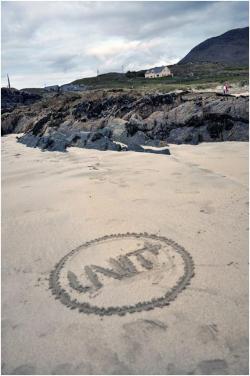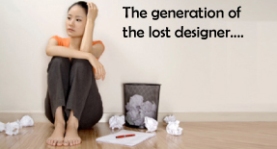 The Design Wire recently had a chance to speak with Jordana Lyden-Swift, one of the lead designers from the Unit+ collective and a Community Design Ambassador for The Design Wire. Having recently returned from Italy where the Unit+ team have been working on Operazione Arcevia 2.0, a community led design project based in beautiful Riserva Privata San Settimio in the Marche region. We jumped at the opportunity to speak with Jordana about how community led design could help benefit everyone involved in more ways than one…
The Design Wire recently had a chance to speak with Jordana Lyden-Swift, one of the lead designers from the Unit+ collective and a Community Design Ambassador for The Design Wire. Having recently returned from Italy where the Unit+ team have been working on Operazione Arcevia 2.0, a community led design project based in beautiful Riserva Privata San Settimio in the Marche region. We jumped at the opportunity to speak with Jordana about how community led design could help benefit everyone involved in more ways than one…
Hi Jordana, thank you for taking the time to speak with us. First of all, could you please explain to us what exactly Unit+ is and what it’s all about?
Unit+ is primarily, an architecturally led design practice based in London. Whilst there is a core group of designers that ensure smooth running of the studio and oversee all projects, we operate as a collective. We have a trusted network of designers that mean we can confidently take on any scale of project and be sure we can still deliver quality. We largely encourage participation, not observation, and at the heart of our work is our community led design projects. We like to have a large social aspect to our projects, working with communities and ensuring our designs have a positive influence on their surrounding context, weather that is social, environmental or otherwise. Our motto, if you could call it that, is Conversation, Collaboration, Concept, Design. Good design is art that solves problems. If you don’t understand a problem, you can’t overcome it, so engaging with clients and communities is paramount for us the in development of a good project. We like to get under the skin of a project brief and we have a strong belief that the best work is obtained by working collaboratively with both the community and designers along with artists and other designers from across all the disciplines.
Unit+ came together whilst we were all studying at London Metropolitan University; the founding members were all in the same design studio, Studio 3. It is unusual to find people that think in a similar way to you, and we are not ones to break that mould, however whilst some of us feel that the concept, or the aesthetic, or even the structure is the most important aspect to a project, we all have the same set of core values when it comes to design. Our design studio involved working with live projects and we were able to experience valuable, firsthand experience of working with a community as our partners in design. Working within a very hands-on environment encouraged the realization that even at a small scale, so much is achievable. When we left university we weren’t prepared to give that up, so Unit+ was born.
I became involved with Unit+ because I agreed with the ethos and saw a way to “be more in control of my professional career”. As a young design graduate, good internships area rare and job positions are even rarer. Even if you do manage to obtain one, everyone has heard the horror stories of hours spent making tea and drawing up boring layouts. Whilst there are many important things to be learned from conventional professional practice, I felt the hands on manner of Unit+ was for me. At a small scale one can be involved in every stage of a structures realisation. From concept to completion, you learn what is necessary to realise a project. Whatever path ones career takes, that is invaluable experience.
You have recently returned from Italy where Unit+ have been working on a project, could you tell us more about this project and how it came into fruition?
Operazione Arcevia 2.0 came into being when Unit+ founder Nicolo Spina met Carolina Bernasconi, the owner of Riserva Privata San Settimio. I believe the meeting was by chance but it shows that with entrepreneurial thinking, “opportunities can be found everywhere“. The idea was birthed to create a workshop. Five of us stayed at the reserve for a week creating experiential maps and researching the area. The O.A 2.0 brief was developed by Unit+ in collaboration with the reserve based on our findings. The reserves owner wished to create something amazing in and for the local area and Unit+ became the enabler. A plan for rejuvenating the area informed fully by the untapped potential we discovered there. We have since been back twice with larger teams and have built two structures, created 1:1 mapping systems, and created installations within the nearby town of Palazzo. The event surrounded all of these in order to engage the local community and discuss the possible futures of the area. We will be heading back next April and our intentions are to grow the project to benefit and involve as much of the local area as possible.
It’s very important for every designer to work with a community at some point during their career, even just for the experience. It’s different to working with a conventional client. All our designs are for end users and this can sometimes get lost as we focus ever more tightly on our work. Working with a community “brings some of the human back to design”.
I know a number of architects that are scared of the community consultations that are necessary when working on large scale community projects. A community is not an issue that needs to be overcome but approached in the right way, (such as not showing up and informing them of what you’re building in their back garden, but actually as the name suggests, consulting them) communities are an amazing source of inspiration which can lead to better design. Working on a community orientated design project often gives you more freedom within your design. Conventional clients generally have a very clear idea of what they want. My experience is that community orientated design allows more creative freedom as they want a result but they are far more open to the different methods involved in reaching that goal.
Design has huge influence on us in our daily lives; everything we use was designed by someone somewhere. We recognize good design by its ergonomics, how easy it is to use. Malcolm Gladwell’s broken window theory shows how people can be influenced by their environment. If this is true of daily life, of course it can be used within communities. I’m not talking about  hyper-modern methods and materials, but simply streamlining and emphasising the design that underlies everything we come into contact with.
hyper-modern methods and materials, but simply streamlining and emphasising the design that underlies everything we come into contact with.
The project that Unit+ worked on in Italy was aimed at helping to reinvigorate the local community, how did you tackle this issue and how did the community respond to your presence there?
O.A 2.0’s aim is to reinvigorate the local area. This is not a quick fix issue, a sustained effort is required, which is why we return twice a year. Regeneration master-plans have two problems for me in relation to this area of Italy. They work on too much of a formula, which does not take into account the human aspect, which can have a huge influence on a project like this. They also require huge amounts of resources. Our plan works in phases, each informed by the last and the ever changing environment of the area. This allows for an organic growth that can easily incorporate new developments and help turn away from dead ends.
Because we have taken the time to speak to the small community of Palazzo, the council and the local arts organisations are able to back us with support, advertising and even financially wherever they can. The projects are generating a vast amount of interest within the community, the man who paid for the cobbling of the main square encourages the use of our chalk spray paint, asking why it is not permanent and local women even grasp our hands when passing in the street proclaiming “buona fortuna” (Good luck).
I believe similar techniques could work in London. However the phrase “one size fits all” does not apply when considering community led projects. But as we spent time discovering what we could about Palazzo and Arcevia, the same exploration principles could help create an equal understanding of an inner city area and help develop a community orientated design project tailored for it. The intent remains the same but the method changes entirely. Whilst studying at London Metropolitan University, we were involved in a community orientated design project based in Everton. We were only there for a short while where we realized a small installation within the local school, we also held an exhibition of ideas for future developments that could take place and spoke to local community members about their thoughts. It goes to show that community orientated design projects can be any size and work on any timescale. It all depends on the resourcefulness of the designers.
Communities and charities can benefit from connecting with design in many ways. Designers are essentially problem solvers and will find innovative solutions to problems that may not have been immediately apparent. Installations, public or otherwise, raise awareness and intrigue. Creating a point of focus for events means communities can come together and it can help create opportunities, such as marketing or even fundraising. For example, at our beach hut raising event, food was free. It was donated and handed out by local businesses. However it had the capability to have over events such as charity auctions, bake sales or generate any number of sources for fund raising. For the beach hut raising, the element of community engagement and collaboration to raise the 50 beach huts were our primary aims of the project.
And on the same note, the benefits for young designers to become involved with community led design are innumerable. When searching for first jobs we’ve all discovered the catch 22 of “you cannot have a job because you lack experience, but you lack experience because you haven’t had a job”. Working with communities and charities allows for huge portfolio and CV development opportunities, whilst also “setting you apart by the nature of your work” for potential employers. As I mentioned there is a certain amount of creative freedom when working with charities and communities which will develop ones professional confidence and client interaction skills which are so important. In university we are very much lead by tutors, however, working with a community is more entrepreneurial by nature. You must be the harshest critic of your own work; it is your responsibility to give your best. Unlike university which consists mostly of hypothetical scenarios, working with charities and communities, one must be aware that your designs will then be inflicted on people. This responsibility and pressure combined with the freedom makes us all better designers.
Most charities or communities rely on fundraising or donations to maintain their organisations, do you think that access to design should only be for those whom can afford top designers or can design also be affordable?
Good design should not be elitist. It can be affordable and obtainable for almost any situation. For example, our beach hut project gathered momentum coming up to the event that we had not expected. We had invited local business owners to come to see us but seeing how many local residents were showing interest we asked them to bring sample plates of their produce. Knowing our intent for the materials we were buying, local wood and fixings merchants gave us huge discounts and in turn we posted their names as sponsors. Especially when working  on behalf of charities or communities you would be amazed at the generosity of local businesses.
on behalf of charities or communities you would be amazed at the generosity of local businesses.
You recently facilitated two architectural design workshops for children in Ireland, How did that come about and what were the reactions of the children?
The workshops in Ireland came about when I was working with Galway arts centre. We were discussing running a series of workshops and when I contacted the local school. The reaction from the school was wonderful and the schools Headmistress became very excited by the prospect of hosting an architectural workshop. She asked me to come to run a small workshop to test the response of the children. Our aim was to make architecture more accessible and interactive for children and help give them a sense of ownership over their built environment.
It is possible that similar workshops could be aimed at adults within London communities. No designer can understand a community better than the people who live there can, so if shown how to perceive the potential in seemingly inane things the way designers can, the local community can become amazing assets to their area. To illustrate this in a slightly different way, while attempting to compile a series of stories about a region of Ireland. I asked the locals if there was any interesting folklore or local stories about the place where they lived. One particular gentleman said no, none that he knew of. When pressed he conceded there was an old ruin on the coast which supposedly belonged to an ancient Irish pirate queen. It wasn’t that he wanted to keep the tale from me. He just wasn’t quite sure of what exactly I was after. The same can be said of communities. There are assets in every community waiting to be uncovered, however most people may not realize the potential of things they take for granted.
Every year there are thousands of design graduates all vying for the same industry jobs, how important do you think it is to help nurture young design graduates that might not have the opportunity to go straight into the world of design?
We’ve all heard the phrase “it’s not what you know it’s who you know”, cynical though it may be, it’s the experience of many young designers. I consider myself lucky that I was surrounded with other designers when I finished university that were also willing to push themselves in an unusual alternative direction. Having that support, even though it wasn’t from anyone with more experience than me or with more letters after their name, it gave me the power to “enter the world of design under my own steam”. We are losing a generation of designers to second choice careers because they find walls instead of opportunities. With the lack of conventional professional practice positions it is essential to find a transition for graduates to enter the working world.
In my experience, not much if any support is available for recent design graduates. I’m aware that some universities have graduate schemes. I’m not sure how successful these are, but their aim is to find placements, not necessarily develop design skills. One very much has to work on your own initiative to find paths to move forward. The design world is not passive and being proactive is essential if you want to create opportunities. If it’s not happening for you the conventional way, make your own way. The design industry is not as regimented as others, ingenuity will be embraced.
I talked before about the individual benefits for both organisations and graduate designers to work together. The reciprocal relationship that can be created is ideal for all involved. Communities will be able to collaborate with young, passionate designers that will really engage in a project, which in turn can have amazing influences on communities and charities. The designers get a chance to work on live projects, developing their portfolio and also positively influence their local area.
What does the future hold for Unit+?
The future always holds surprises for us, because of the way our work is informed, one can never be certain how it will manifest. We will be heading back to Italy again, Operazione Arcevia 2.0 is developing fast and we have another commission north of Venice. I think the future will be exciting, we’re branching out from small scale architecture and working on some interesting interdisciplinary collaborations. You’ll have to wait and see.
Click on the images to view the Unit+ Website. You can also follow the tales of Unit+ on Facebook



